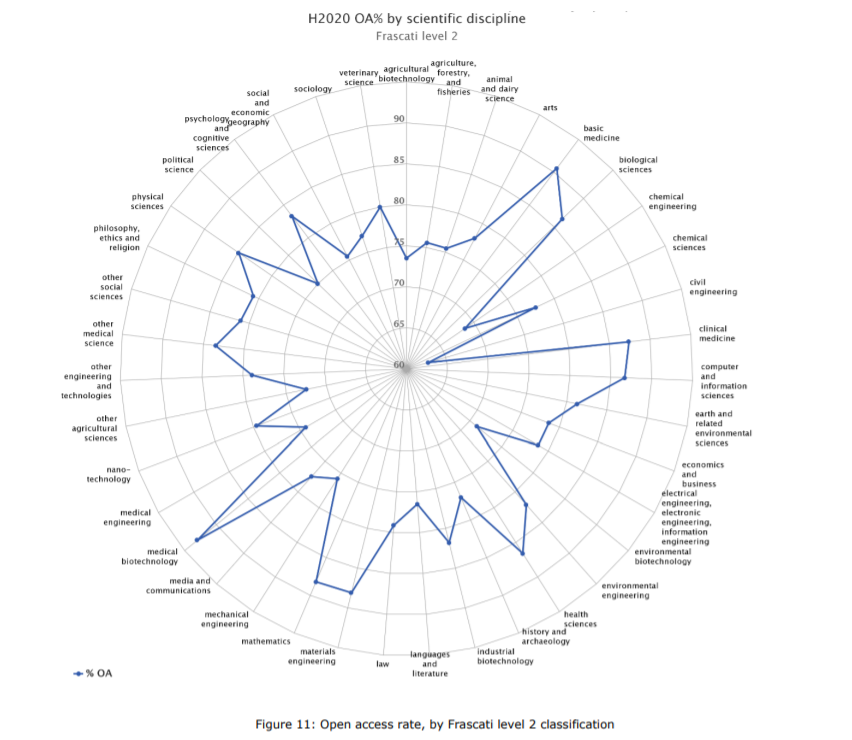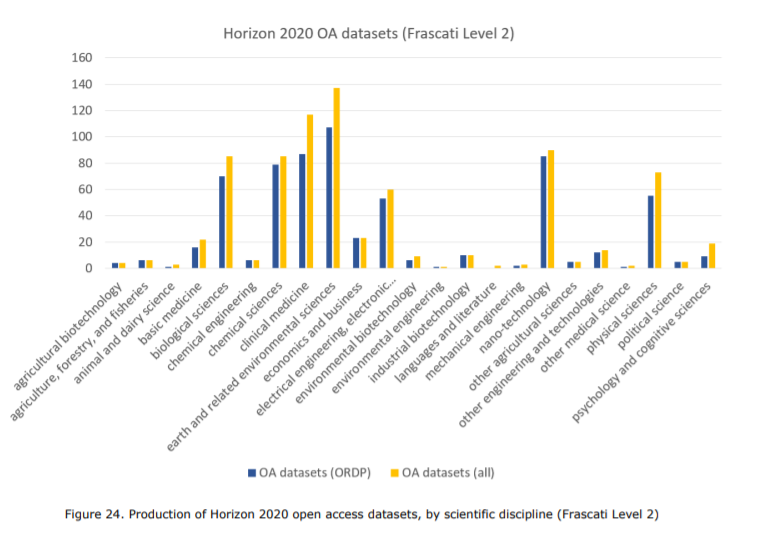How open is EU-funded research data?
Discover the results of the study “Monitoring the Open Access Policy” (MOAP)
To make scientific breakthroughs possible and tackle complex issues, we need collaborative and open science. The European Commission’s (EC) programme Horizon 2020 was created to fund projects contributing to scientific openness. How well has it achieved its goal? How open are the data and the research created by Horizon 2020 funded projects?
What is Horizon 2020?
The EC’s Horizon 2020 (2014-2020) is one of the world’s largest funding programmes for research and innovation. It is succeeded by the Horizon Europe programme (2021 –2027). The Horizon programmes aim to produce world-class science and to remove barriers to innovation. They help the public and private sector to innovate together to take ideas from the lab to the market.
One of the characteristics of Horizon 2020 is that the papers and data published under its umbrella must meet the Open Access Policy, which states that anyone can read, download, copy, print, and distribute the information in them.
Monitoring the Open Access Policy (MOAP)
In June this year, Athena Research & Innovation Center, PPMI and UNU-MERIT published the study ‘Monitoring the Open Access Policy (MOAP) of Horizon 2020’.
This study examines, monitors, and quantifies how well research data and papers, published under Horizon 2020, meet the Open Access Policy. It concludes with a set of recommendations to improve openness.
The methodology of the assessment
- Publications: researchers gathered 218.558 unique Horizon 2020 publications, of which 154.185 are peer-reviewed. To assess their openness, Horizon 2020 was compared with other R&D funding programmes that have similar access policies, such as the Bill & Melinda Gates Foundation or publicly available databases like Google Scholar.
- Datasets: researchers collected 6,231 distinct Horizon 2020 datasets. To assess their quality, several indicators such as accessibility and interoperability were established.
Key findings
The study shows that for
- Publications:
- the rate of open access1 has steadily increased over recent years to reach now 83% compliance with the Open Access Policy. This places the EC at the forefront of publishers globally (12th place out of 47) and indicates that Horizon 2020 publishes more open access papers than some of the largest research funders in Europe (Switzerland, Sweden, Germany, Italy, Spain, Ireland, Portugal), as well as in the United States2. In addition, publishers also adhere very well to the regulations as set by Horizon 2020, with an even more impressive success rate of 95%3.
- the rate of open access varies between scientific fields and disciplines. The percentage of open access publications was highest within medical and health sciences (88%) and natural sciences (82,8%). Agricultural and veterinary science, engineering and technology, social sciences, as well as humanities and arts all score on the lower side of the spectrum. In figure 1 you can find a more nuanced picture of the scores per sector.

Figure 1. Percentage of open access (OA) publications per scientific field
- Datasets:
- there are differences between disciplines. Studies related to earth and environmental sciences, clinical medicine, chemical and biological science, as well as nanotechnology, produce most datasets. In contrast, animal and dairy sciences, environmental engineering, languages, and literature, as well as mechanical engineering produce the least.
- the sectors that produce the most datasets, also have the highest rate of open access. For more details, see figure 2.

Figure 2. Number of datasets published per scientific field
To create this study, collaboration was of the essence. The European Commission and funding agencies worked together closely to make this study a reality. In general, to make scientific breakthroughs possible and tackle complex issues, collaborative and open science is key. Horizon 2020 started out in 2014 to accomplish just that, and this study shows that it has indeed achieved that goal.
To learn more, find the report, the study database, and the data management plan on the portal.
Looking to stay tuned for more news and events? Follow us on Twitter, Facebook, and LinkedIn, or subscribe to our newsletter.
Footnotes
1 Monitoring of the open access policy of Horizon 2020
2 Monitoring of the open access policy of Horizon 2020
3 This compliance rate refers to adherence to the regulations set out in Article 29.3 for projects that had to comply to the article (those in the ORDP), and uptake refers to compliance to Article 29.3 by all projects, whether they had to comply or not.
